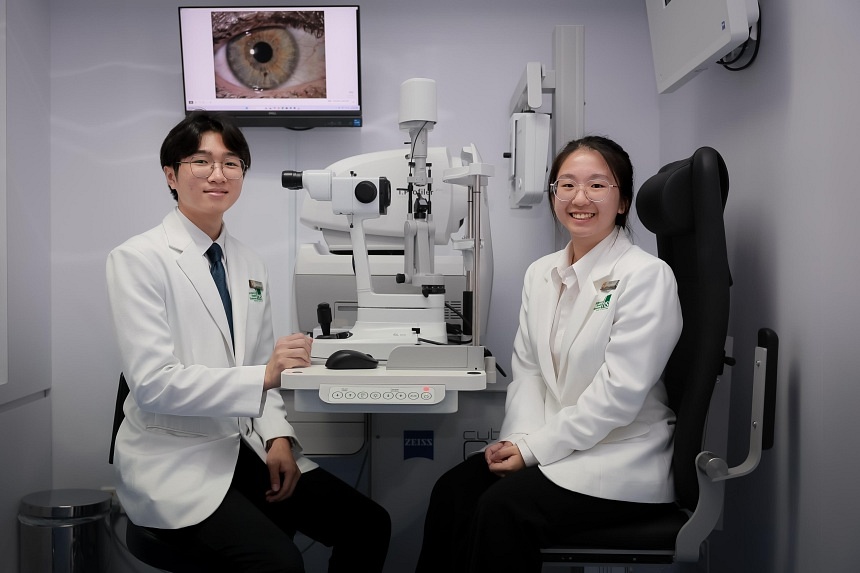The new NP-Zeiss Management Suite, a partnership between NP and optical and optoelectronic technology company, Zeiss, was launched on Sept 18, 2024. Students get to learn from a fully digitalised system that improves the patient consultation process, screening speed and accuracy, and allows real-time data sharing. It is a key part of the enhanced curriculum co-developed by NP and Zeiss to focus on myopia management.
With the refreshed curriculum, Year 3 diploma students can also apply for a new 25-week specialised internship programme, instead of the previous 16-week attachment. The new extended internship includes work opportunities at both Zeiss Singapore and its regional office in Manila. The internship offers a combination of hands-on clinical training and corporate exposure to students.
These changes will equip students with up-to-date skills and knowledge to prepare them for the industry, especially given Singapore’s high and increasing rates of childhood myopia, said NP.
According to the Singapore National Eye Centre, 80 per cent of young Singaporeans are myopic by the age of 18, and 20 per cent of young adults with myopia will have high myopia, putting them at greater risk of visual complications later on in life.
Besides NP, Singapore Polytechnic also offers a diploma in optometry. Diploma holders can go on to pursue related degree programmes at universities in countries such as the United Kingdom or Australia.
The Straits Times spoke to a lecturer and students to find out what it takes to study optometry and the career options it offers. If you are considering becoming an optometrist, here are the five things to know.
1. Know the difference between optometrists, opticians, and ophthalmologists
Optometrists are eye care professionals who diagnose and treat common eye diseases, injuries and vision problems.
However, they cannot perform surgical procedures for eye conditions. Surgery can only be performed by ophthalmologists, who are eye specialists with advanced medical training.
Opticians specialise in advising patients on their eyewear, by interpreting prescriptions provided by optometrists or ophthalmologists.
2. You need to meet certain requirements to enter an optometry course
The recommended aggregate for Diploma in Optometry courses for O level graduates, following the ELR2B2-C aggregate type, is 6 to 12 for Ngee Ann Polytechnic and 8 to 12 for Singapore Polytechnic, based on previous years’ cut-off scores. Nitec holders are required to have a minimum Grade Point Average (GPA) of 3.5.
Students are required to have taken at least one science-related subject in secondary school, but they don’t need prior expertise in vision-related science or technology.
Ms Janelle Tan, 19, a Year 3 student from NP’s Diploma in Optometry, said she’s not usually tech-savvy and did not know much about optometry before she enrolled in the course.
However, “this diploma incorporates on-the-job training, where I slowly learnt everything from day one”, she said.

